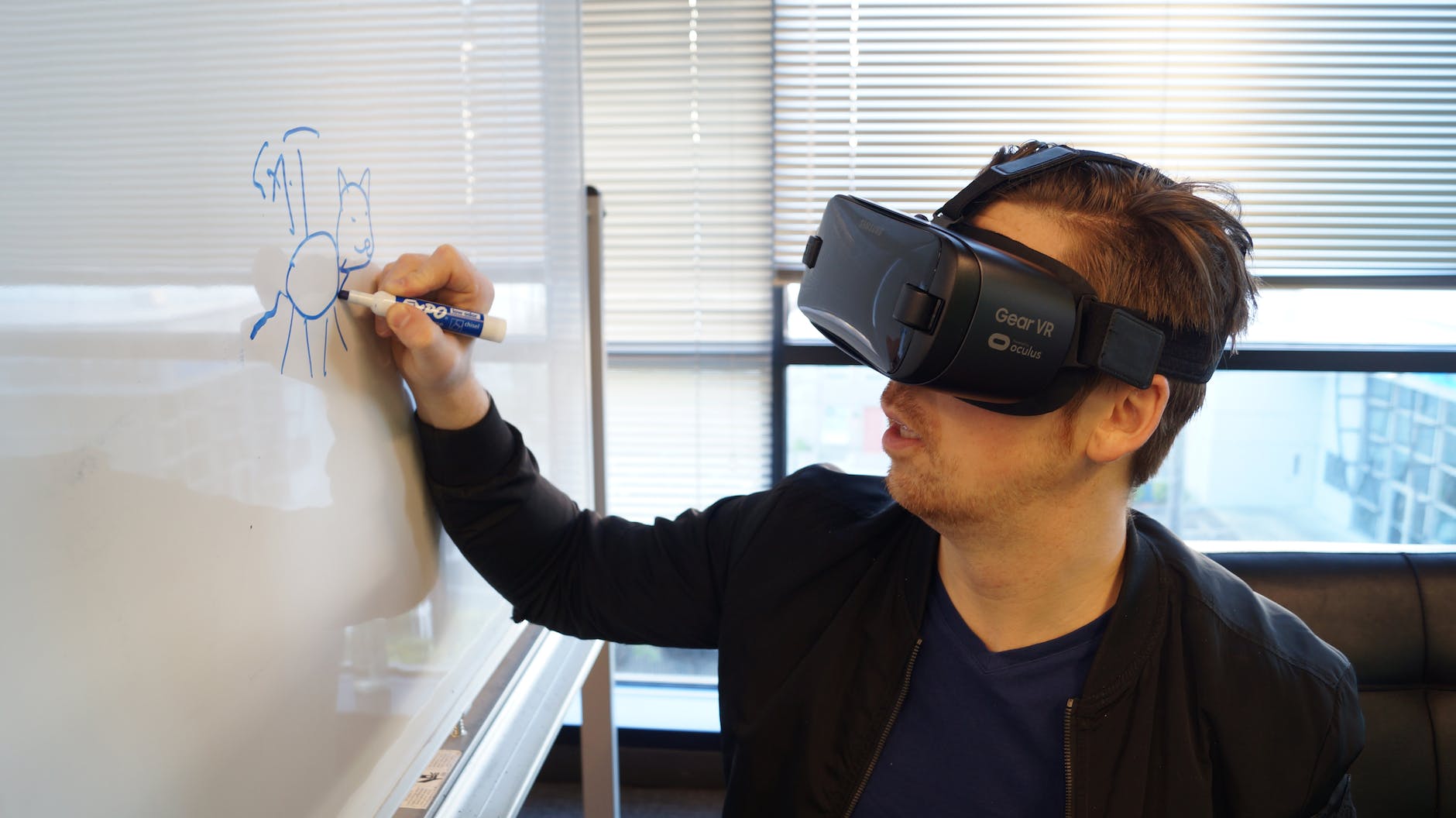Introduction to Metaverse Web 3.0
As a digital enthusiast, the concept of the Metaverse web 3 has always intrigued me. Now, with advancements in technology, the idea of a fully immersive digital universe or Metaverse is becoming a reality. Today, we stand on the precipice of a new era – the Metaverse Web 3.0. This is a digital universe where artificial intelligence (AI), virtual reality (VR), augmented reality (AR), and blockchain technology converge to create a dynamic, interactive, and immersive digital environment.
In this Metaverse, the physical and digital worlds are intertwined, creating a seamless, multi-dimensional space that is accessible from anywhere, at any time. In this new reality, individuals can interact with each other and their environment in real time, participate in events, engage in commerce, and even own digital assets. This shift is not just a technological revolution; it is a societal and economic transformation.
When we talk about the Metaverse Web 3.0, we are referring to a new generation of the internet. This is a decentralized, peer-to-peer network where users have control over their data and digital identities. It’s an internet of value and trust, where transactions are secured by blockchain technology, and smart contracts automate the execution of agreements.
Understanding the concept of Metaverse Web 3.0
To fully grasp the concept of the Metaverse Web 3.0, it’s essential to understand its core components. At its heart, the Metaverse is a collection of countless interconnected digital spaces. These spaces are designed to be immersive and interactive, often leveraging VR and AR technologies. This allows users to experience these digital spaces as if they were physical locations.
Web 3.0, on the other hand, refers to the next stage in the evolution of the internet. It’s an internet that leverages blockchain technology to provide a decentralized, secure, and user-centric digital environment. In Web 3.0, users own their data and digital identities, have control over their digital assets, and can engage in peer-to-peer transactions without the need for intermediaries.
When we combine the immersive and interactive nature of the Metaverse with the decentralized and user-centric Web 3.0, we get the Metaverse Web 3.0. This is a digital universe that is not only immersive and interactive but also decentralized, secure, and user-centric. It’s a digital universe that empowers users and provides them with unprecedented levels of control, freedom, and opportunities.

The transition from Web 2.0 to Metaverse Web 3.0
As we transition from Web 2.0 to Metaverse Web 3.0, we are witnessing a significant shift in the digital landscape. Web 2.0 was about social media, user-generated content, and the democratization of information. It was an internet of participation, where users could create, share, and consume content. However, this came at the cost of privacy, security, and control over data.
Metaverse Web 3.0 is a response to these challenges. It’s an internet of value and trust, where users have control over their data and digital identities, transactions are secure and transparent, and intermediaries are replaced by smart contracts. This shift from Web 2.0 to Metaverse Web 3.0 is not just about technological advancements but also about changing how we interact with the digital world.
In the Metaverse Web 3.0, we are not just consumers of content but active participants in the digital universe. We can create, own, and trade digital assets, participate in virtual events, and interact with other users in real time. We can live, work, and play in the Metaverse, making it an integral part of our digital lives.
The impact of Metaverse Web 3.0 on E-commerce
When it comes to e-commerce, the Metaverse Web 3.0 is set to bring about a paradigm shift. Today, e-commerce is largely a one-dimensional experience. We browse products on a screen, add them to our cart, and checkout. There is little interaction, engagement, or personalization.
The Metaverse Web 3.0 promises to transform this experience. Imagine walking into a virtual store, interacting with products in 3D, trying them on using AR, and receiving personalized recommendations based on your preferences. Imagine attending a virtual fashion show, buying the products straight off the runway, and having them delivered to your doorstep. This is the future of e-commerce in the Metaverse Web 3.0.
Furthermore, the Metaverse Web 3.0 opens up new possibilities for peer-to-peer commerce. In this new digital universe, users can create, own, and trade digital assets. This could range from virtual real estate to digital art and virtual goods. These assets can be bought, sold, and traded on decentralized marketplaces, creating new opportunities for e-commerce.
“The Metaverse of Web 3.0 is not just a new version of the internet, but a profound shift in our digital existence. It’s a realm where virtuality and reality intertwine, where every interaction, transaction, and connection is profoundly personal, secure, and immersive. A leap from passive consumption to active creation, from centralized control to decentralized power. Welcome to the future, where the internet is no longer just a tool, but an extension of our very being.”
The role of Metaverse Web 3.0 in shaping the future of E-commerce
As we delve deeper into Metaverse Web 3.0, it’s clear that it’s not just a new platform for e-commerce but a new paradigm. In this new digital universe, e-commerce is not just about buying and selling products but about experiences, interactions, and engagement.
The Metaverse Web 3.0 enables brands to create immersive and interactive experiences for their customers. They can create virtual stores that mimic their physical stores, host virtual events, and engage customers in new and innovative ways. This not only enhances the shopping experience but also strengthens the relationship between the brand and the customer.
Furthermore, the Metaverse Web 3.0 democratizes e-commerce. It allows users to become creators, owners, and traders of digital assets. They can create their own virtual goods, sell them on decentralized marketplaces, and even establish their own virtual businesses. This empowers users and fosters entrepreneurship in the digital realm.
Case studies: Successful use of Metaverse Web 3.0 in E-commerce
There are already several examples of businesses leveraging the Metaverse Web 3.0 for e-commerce. For instance, Decentraland, a virtual world built on the Ethereum blockchain, allows users to buy, sell, and trade virtual real estate. Users can also create their own virtual experiences, from art exhibitions to music festivals, and monetize them.
Another example is the fashion industry, which is increasingly turning to the Metaverse for virtual fashion shows and digital clothing. Brands like Balenciaga and Gucci have hosted virtual fashion shows, while digital fashion platforms like DressX and The Fabricant offer digital clothing that can be worn in the Metaverse.
These case studies demonstrate the potential of the Metaverse Web 3.0 for e-commerce. They show how businesses can create immersive and interactive experiences, engage customers in new ways, and open up new avenues for commerce.
Challenges in integrating Metaverse Web 3.0 in E-commerce
While the potential of the Metaverse Web 3.0 for e-commerce is immense, there are also several challenges that businesses need to navigate. One of the key challenges is the technological complexity. Creating immersive and interactive experiences in the Metaverse requires advanced technologies like VR, AR, AI, and blockchain. This not only requires significant investment but also specialized skills and expertise.
Another challenge is the issue of digital rights and ownership. In the Metaverse Web 3.0, users can create, own, and trade digital assets. This raises complex questions about intellectual property rights, digital ownership, and the enforcement of these rights in the digital universe.
Furthermore, there are also concerns about privacy and security. In the Metaverse Web 3.0, users have control over their data and digital identities. However, this also increases the risk of data breaches and cyberattacks. Therefore, businesses need to ensure that they have robust security measures in place to protect their customers’ data and digital assets.
Opportunities for businesses with Metaverse Web 3.0 in E-commerce
Despite these challenges, Metaverse Web 3.0 presents a plethora of opportunities for businesses in e-commerce. For starters, it offers a new platform for businesses to engage their customers. Businesses can create immersive and interactive experiences, personalize their offerings, and build stronger relationships with their customers.
Furthermore, the Metaverse Web 3.0 opens up new avenues for commerce. Businesses can sell virtual goods, host virtual events, and even create their own virtual worlds. This not only diversifies their revenue streams but also allows them to tap into new markets and customer segments.
The Metaverse Web 3.0 also empowers users to become creators, owners, and traders of digital assets. This democratizes e-commerce and fosters entrepreneurship. By supporting and nurturing these user-generated businesses, businesses can not only strengthen their ecosystem but also create new opportunities for collaboration and partnership.

Exploring the Synergy Between Web 3.0 and AI: Revolutionizing the Digital Landscape
The Next Frontier: How Web 3.0 is Shaping the Future of the Internet
Preparing your business for the Metaverse Web 3.0 revolution
As we stand on the precipice of the Metaverse Web 3.0 revolution, it’s crucial for businesses to prepare themselves for this new digital universe. This requires a strategic approach that takes into account the opportunities and challenges that the Metaverse Web 3.0 presents.
Firstly, businesses need to embrace the technologies that underpin the Metaverse Web 3.0. This includes VR and AR for creating immersive and interactive experiences, AI for personalization and automation, and blockchain for secure and transparent transactions.
Secondly, businesses need to rethink their business models and strategies. This involves shifting from a product-centric approach to an experience-centric approach, leveraging user-generated content and commerce, and embracing decentralization and peer-to-peer transactions.
Lastly, businesses need to foster a culture of innovation and adaptability. The Metaverse Web 3.0 is a rapidly evolving digital universe, and businesses need to be agile and innovative to stay ahead of the curve. This involves fostering a culture of experimentation, learning, and adaptation and investing in skills and capabilities for the Metaverse Web 3.0.
Conclusion: Embracing the future of E-commerce with Metaverse Web 3.0
The Metaverse Web 3.0 is more than just a technological revolution; it’s a societal and economic transformation. It’s a new digital universe that is immersive, interactive, decentralized, and user-centric. It’s an internet of value and trust, where users have control over their data and digital identities, and transactions are secure and transparent.
For businesses in e-commerce, the Metaverse Web 3.0 presents a plethora of opportunities. It offers a new platform for customer engagement, opens up new avenues for commerce, and empowers users to become creators, owners, and traders of digital assets.
However, to harness the power of the Metaverse Web 3.0, businesses need to embrace the technologies that underpin it, rethink their business models and strategies, and foster a culture of innovation and adaptability.
As we embark on this journey into the Metaverse Web 3.0, it’s clear that this is not just the future of e-commerce but the future of the digital economy. It’s an exciting and transformative journey, and I can’t wait to see where it takes us.
From Traditional to Modern: The Unavoidable Shift to Digital Business Transformation
Navigating the Crypto World: A Comprehensive Comparison of Proof of Stake vs Proof of Work
Unlocking the Power of Blockchain Technology: How This Revolutionary Technology is Transforming Industries


